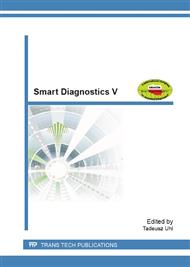p.202
p.209
p.214
p.223
p.232
p.243
p.249
p.257
p.266
Power Plant Remaining Life Evaluation
Abstract:
The present paper describes the development of a monitoring, analysis and diagnosis system of power plant equipments based on strain measurements. The objective is to help companies increase availability and reduce maintenance costs. The aim is the integrity evaluation of a main steam and a hot reheat steam piping through inspection, strain monitoring and computational diagnosis. The benefits are, among others, reduction in the uncertainty of the remaining life prediction and reduction of work, through process automation and integration and real time monitoring (through the Internet) of the operational condition of the equipment. Thus, greater confidence and availability of the monitored generating unit is sought as well as cost reduction as a consequence of reduced frequency of unnecessary unit stops and greater speed in decision making due to more precise follow up of the operational condition of the target-equipment and of its remaining life.
Info:
Periodical:
Pages:
232-242
Citation:
Online since:
October 2013
Keywords:
Price:
Сopyright:
© 2014 Trans Tech Publications Ltd. All Rights Reserved
Share:
Citation:


